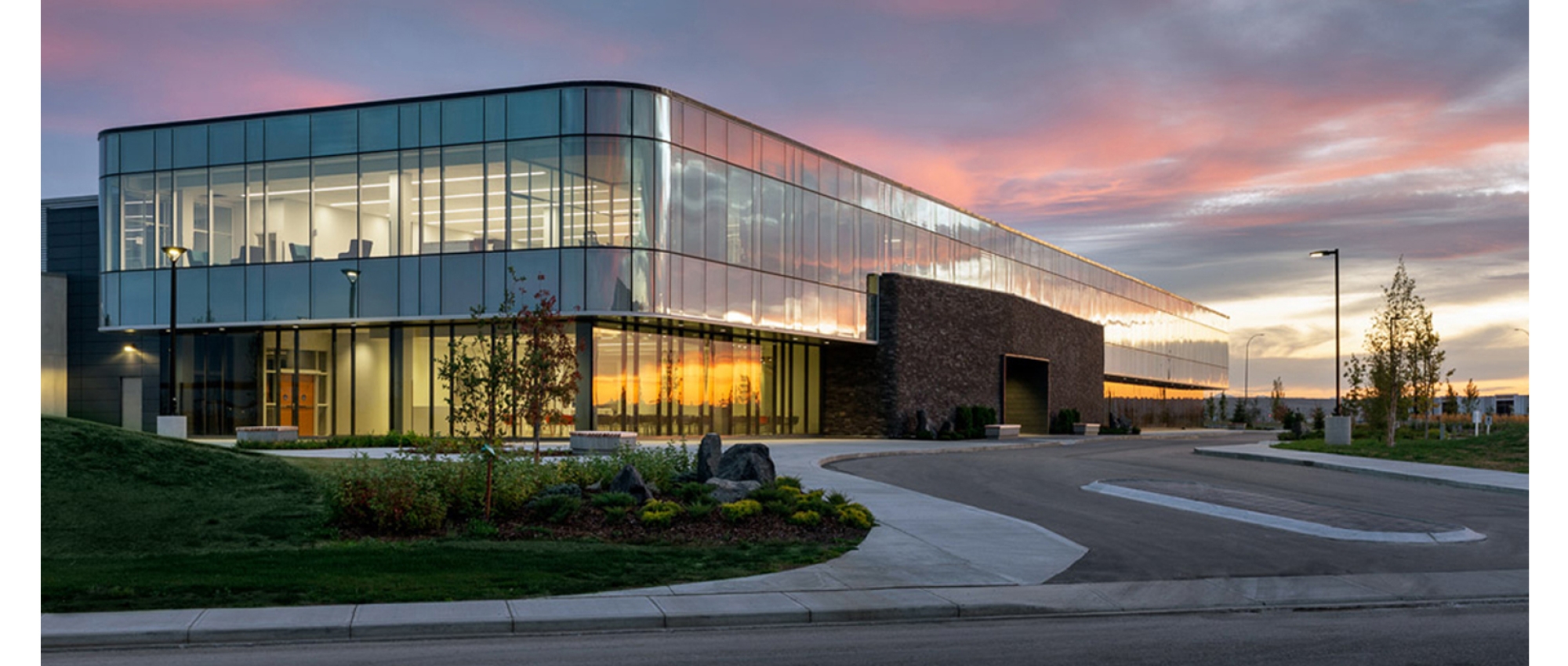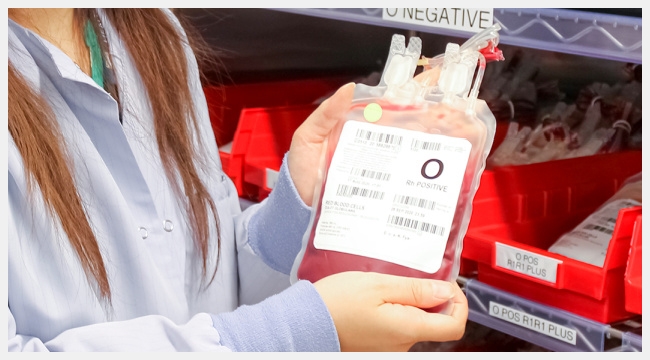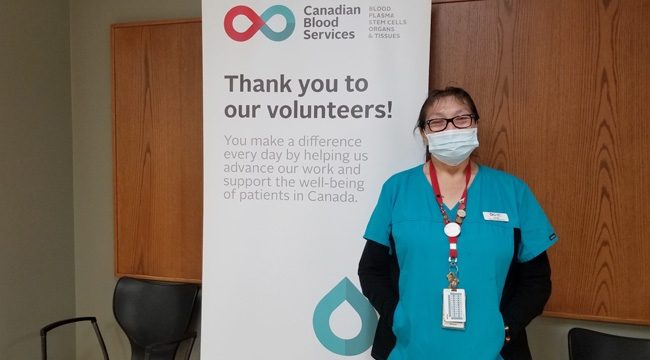The road to LEED: how green design principles have shaped our new Calgary site
If you visit Canadian Blood Services’ new Calgary operations facility, you’ll see information about the building’s photovoltaic output (a method of generating electricity from sunlight) on the screen in the lobby.
You can’t see them from ground level, but up high there are 1,597 rooftop solar panels collecting the sun’s rays and converting them into 28 per cent of the building’s electricity, or 702,041 kWH each year.
“Calgary’s the sunniest city in Canada, so it just makes sense,” says Carlene van der Heiden, Canadian Blood Services’ environmental services manager. “The building has a large footprint, so there was plenty of space for a lot of panels. We put on as many as would fit.”
The new Calgary facility was purpose-built, allowing our processes in production, testing, logistics and equipment services to have more efficient processes. Built with environmental sustainability in mind, the building has been approved by the Canadian Green Building Council and achieved Gold LEED certification.
But the journey to certification has affected more than just the building; it’s changed the people in it, too.

There are 1,597 solar panels on the roof of the Calgary facility.
What is LEED?
LEED stands for Leadership in Energy and Environmental Design. There are four possible ratings: certified, silver, gold and platinum, showing the steps organizations are taking to improve their environmental sustainability. LEED considers the whole building’s life cycle — from design and construction all the way through to how it operates. There are 1,017 LEEDv2009-certified projects in Canada, including 95 in Calgary.
There are seven categories that a building can receive points under — five environmental categories and two bonus categories. These bonus categories are for innovation and regional priority and encourage organizations to think creatively and develop strategies that may not fall under the predetermined environmental categories, but which are environmentally sustainable and progressive.
Originally, the new building was on track for a silver rating, but those bonus categories provided a chance to shine. The solar panels are aligned with Alberta’s regional priorities and the new building has an innovative water capturing system that, coupled with waterwise plants native to the region, provides all the water needed for landscaping.
Environmental design from the ground up
- During construction, contractors sorted waste and diverted more than 80 per cent from the landfill.
- Builders also identified, sourced and constructed the building using 20 per cent recycled materials.
- Low-energy LED lights use sensors to adjust their brightness to the weather, as well as to turn on and off based on motion in the room.
- Used natural vegetation that was already on the site and replanted natural prairie flowers where needed.
- All water outlets have water-saving devices.
- The building is oriented in such a way, with an open floor plan where possible, to take advantage of natural light.
It doesn’t end with construction
The shift to a more sustainable environment didn’t end when the doors opened to the facility — green building principles extend to creating a healthy workplace with a lot of natural light and fresh airflow. The workspaces are open-concept, with big windows and natural finishes in many spaces throughout the building.
The new building makes it easier for people to commute in an eco-friendly way, with six electric vehicle charging stations onsite in a prime location near the building, as well as priority parking spaces for carpoolers. There are also bicycle storage facilities and locker rooms with showers for employees who bike or jog to work.
These changes have spilled over into how employees interact with their workplace, and into operating it in the most environmentally sustainable way possible.
“It’s a really nice building and environment to be in. So many people have mentioned to me that before LEED came along, they never really thought about how integral the environmental side of things is in going to the office every day,” says Carlene.



